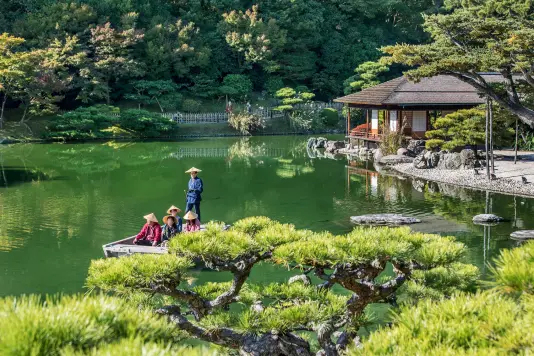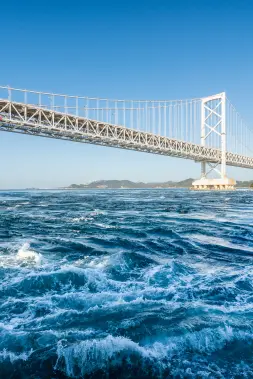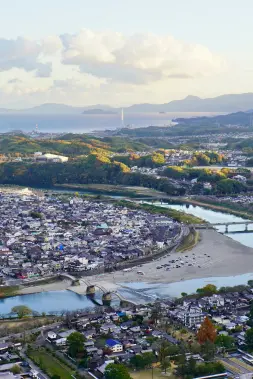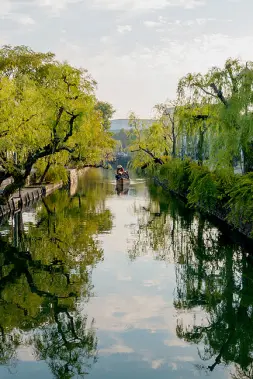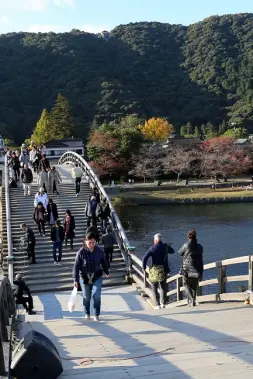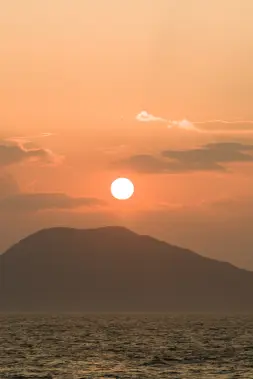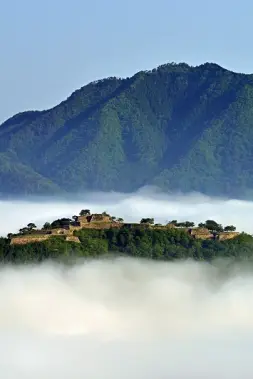Adventure & Experience
Experience History and Art at Ogijima and Megijima Islands Floating in the Seto Inland Sea

The Setouchi Triennale is one of Japan’s most famous contemporary art festivals and is held once every three years, showcasing over 150 artworks, many of them installations, over a dozen or so islands in the Seto Inland Sea. Naoshima and Teshima are by far the most famous art islands, but for those looking for something a little more nuanced and less stage-managed, the smaller islands of Ogijima and Megijima should be high on your list.
What are Ogijima and Megijima?
Ogijima and Megijima, literally ‘male tree island’ and ‘female tree island,’ due to their proximity and similar size, are just one kilometer apart from each other off the coast of Takamatsu in Kagawa Prefecture. At less than three square kilometers each, they are small enough that you can experience both in a day without feeling too rushed. The brightly colored, red and white striped ferry from Takamatsu stops first in Megijima and then in Ogijima before returning to Megijima again on its way back to Takamatsu.
Megijima Seagulls Parking Lot
We caught the early morning ferry from Takamatsu and arrived in Megijima a short 20-minute trip later. As soon as you approach Megijima Port, you will see one of the island’s art pieces — hundreds of seagulls lining the port and surge barriers, shifting in unison in the strong winds. As you disembark from the ferry, you will also be able to hear them. As they rotate like wind vanes, the metal surface of the seagull rubs against that of the pole attaching it to the concrete, creating a cacophony of noise similar to a hungry seagull’s call.
Onigashima Oni no Yakata
Our first stop is Oni no Yakata — this is the first building you will see and is the island’s tourist information center. Oni no Yakata, or Demon’s Palace, is so-called because Megijima, known to the locals as Onigashima or Demon Island, has been long thought of as an island that harbors demons, made famous by the folktale Momotaro. Inside Oni no Yakata is a small theater where you can watch a short, amusing movie about the demons on the island and how Momotaro dared to attack them. Once the movie finished, we went back to the information area and rented bicycles to help us get around the island.
Riding around the island on bikes is a lot of fun, and you can cover a lot of ground very quickly.
The Presence of Absence
Next, we will visit “The Presence of Absence,” a work that has attracted much attention at the Setouchi International Art Festival. This work is installed in a renovated old house. It is by Leandro Erlich, a renowned Argentine conceptual artist, and is based on the theme of making the absence visible. With a restaurant and a library, it is a must-visit place when you come to Megijima.
Artwork aside, there is also a strip of shops and restaurants facing the beach, a well-looked after temple, and lots of narrow streets and houses to ride through, as we make our way back to the Oni no Yakata and the ferry for our next destination, Ogijima.
Ogijima Ogi “Koryukan”
Ogijima is a little smaller than Megijima, with a similar population of around 160 people, but the artworks here felt more sophisticated. Once again, as soon as you disembark from the ferry, you will come in contact with them. Ogijima’s Soul, designed by Jaume Plensa, is not only a sculpture, but also a place where you can obtain all sorts of information on the island.The white roof is designed with the letters of eight different languages, casting various shadows that change depending on the light. Blending into nature, its very existence is art itself! When we were there, the inside of the building hosted an exhibition of children’s art hanging from the ceiling, along with photos of some of the artworks of the island shot at different times of the day. There are also tables inside for you to plan your tour around the island, or wait for the ferry to arrive to whisk you off to your next destination.
Takotsuboru
Right next to Ogijima’s Soul is Takotsuboru by TEAM Ogi. This playground equipment is based on the motif of octopus pots used for octopus fishing, a tradition on the island, said to embody the hope that the island’s children will grow strong and prosper.
There are no electric-assisted rental bikes on Ogijima, and although this seemed strange initially, after exploring the island, you will soon understand why. Unlike Megijima, the streets here are like a maze of narrow footpaths barely wide enough for two pedestrians to pass by, let alone people on bikes. It’s a beautiful island to get lost on while just wandering around, with murals painted on buildings and interesting architecture all over the place. You never know what you see just around the corner.
Walking Ark
At the southern end of the island is Walking Ark by Keisuke Yamaguchi, which is inspired by Noah's Ark and appears like a mountain range with legs.From certain angles, the piece fits in perfectly with the mountain ranges of Shikoku in the distance, looking as if it's about to pick up and walk across the water. Yamaguchi created the piece as a reminder to visitors of the 2011 Great East Japan Earthquake and tsunami, which devastated the Tohoku region of Japan, envisioning the work walking off towards Fukushima Prefecture.
From Walking Ark, we then wandered around the back roads to Toyotama-hime Shrine, from which you can walk along the island's northeast coast to Ogijima Lighthouse, constructed in 1895. From the lighthouse, there are nature trails that cross the island leading to spectacular rock formations and lookouts.
After exploring both islands, I came to the conclusion that they couldn't be more different. Megijima has its wide streets, gently rolling hills, and a cultural focus on ogres, children's fairy tales, and folklore. In contrast, Ogijima feels more rugged, with a compact township consisting of a maze of alleyways to get lost in, and nature trails, and shrines to explore. Yet, together the two islands work in harmony, creating a perfect day-trip from Takamatsu, and a fine alternative to an overwhelming number of tourists on the islands of Naoshima and Teshima.
Photographs and text by Cherise Fong
RELATED DESTINATION
Kagawa
This is an area with many islands, including Naoshima and Teshima, which are famous for art. It also is home to the tasteful Ritsurin Garden. Kagawa is also famous for its Sanuki udon, which is so famous it attracts tourists from throughout Japan. The prefecture is even sometimes referred to as “Udon Prefecture.” [Photo : “Red Pumpkin” ©Yayoi Kusama,2006 Naoshima Miyanoura Port Square | Photographer: Daisuke Aochi]
